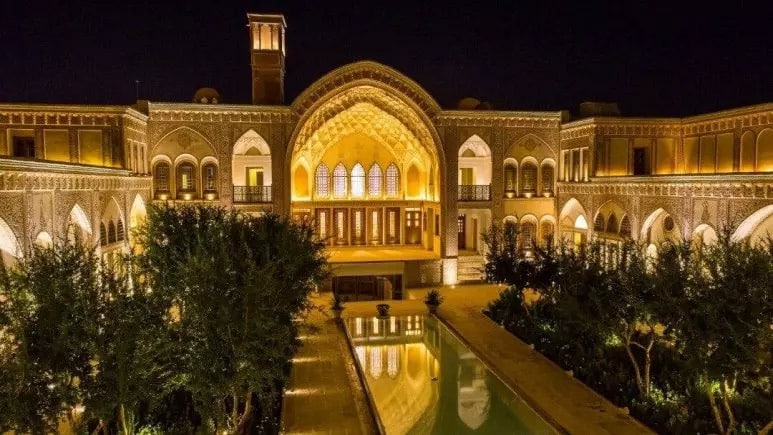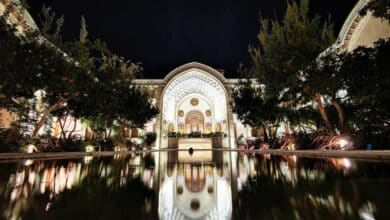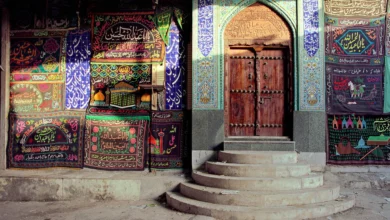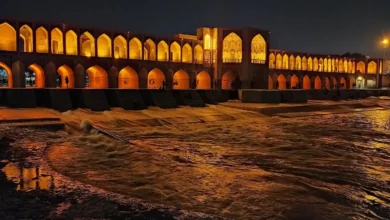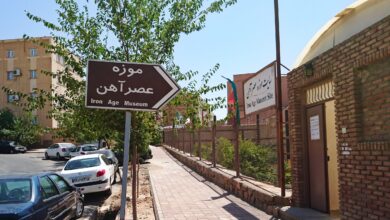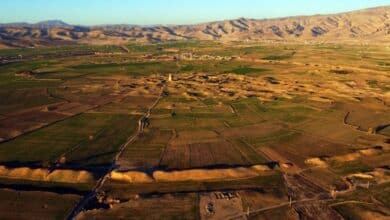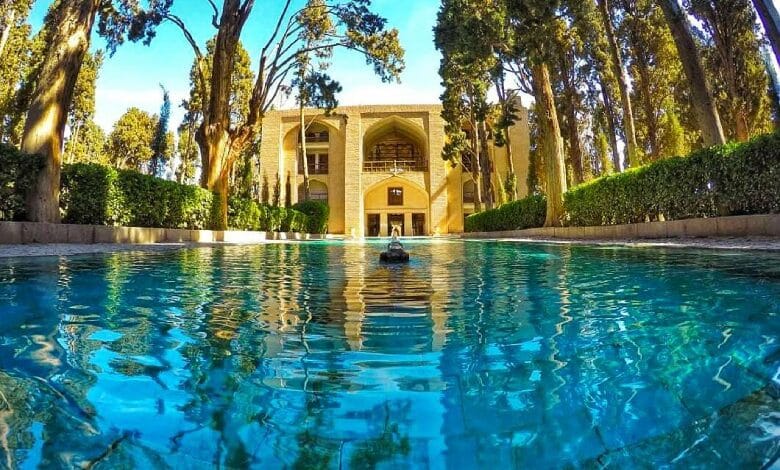
Kashan, situated in the Isfahan province of Iran, is famous for its textiles and was once celebrated for its ceramics during the Middle Ages. The city’s allure stems from the striking difference between the arid expanses of the deserts and the lush greenery of the meticulously maintained oasis. Positioned as the initial major oasis along the Qom–Kerman road, Kashan is located on the periphery of Iran’s central deserts. Among its many attractions, the most renowned is the Fin Garden in Kashan.
The ancient Persian garden, known as Bagh-e Fin in Persian, is a mesmerizing historical site situated in Kashan, Iran. This garden, which dates back to the Safavid era, was finalized in the year 1590. It holds a deep historical significance, notably linked to the tragic assassination of Amir Kabir, the Qajarid chancellor, who was killed in the Fin Bath by an assassin dispatched by King Nasereddin Shah in 1852.
Contents
Structure and Features
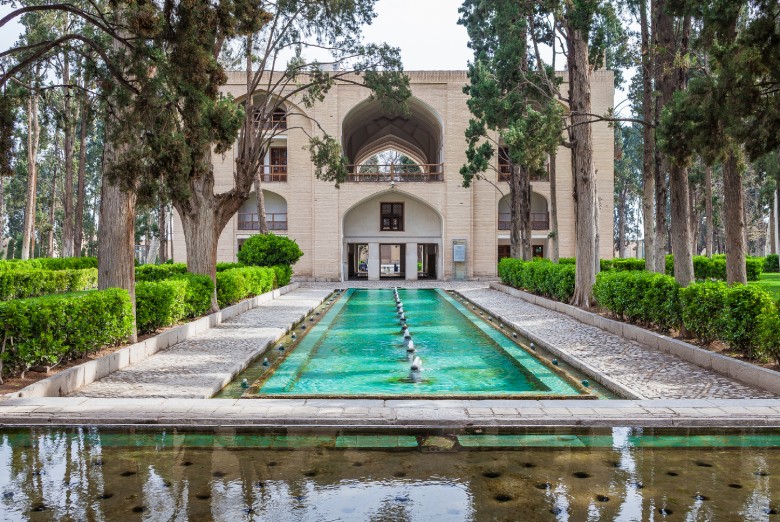
The garden spans across an expanse of 2.3 hectares and showcases a central courtyard encompassed by fortifications adorned with four circular towers.
Similar to other Persian gardens from its era, the Fin Garden incorporates various water elements. Situated in the central section of the garden, the Kushak stands out as an architectural marvel. The ceiling of the Kushak is intricately adorned, further enhancing the garden’s allure.
The Fin Garden is a constituent of the UNESCO World Heritage Site recognized as the Persian Garden, which encompasses a total of nine gardens.
Different Parts of Fin Garden in Kashan
Throughout the years, rulers have visited the Kashan Fin Garden, constructing various buildings and mansions that now hold significant historical value.
Bellow mentioned are different parts of Fin Garden.
Shah Neshin Room
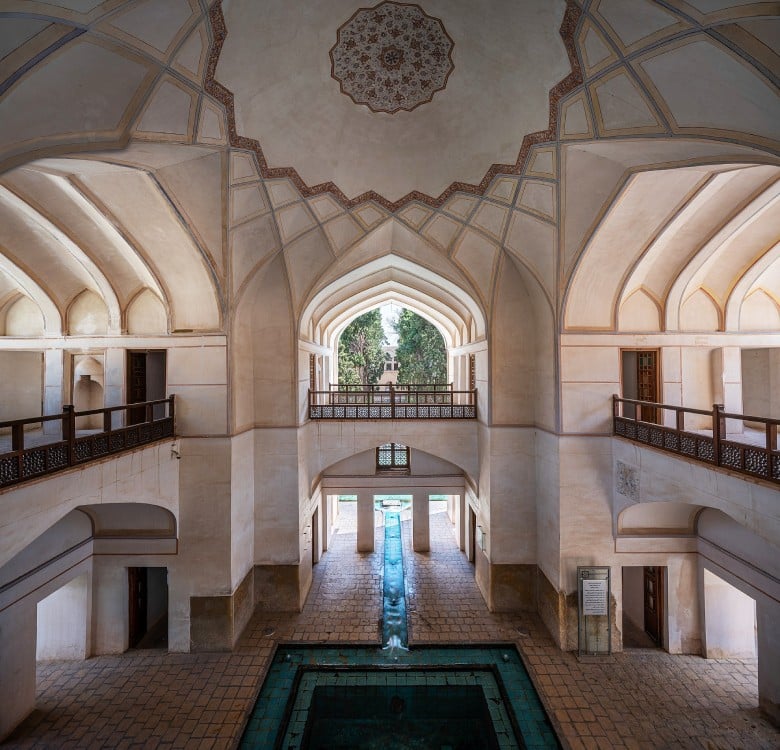
The chamber of the monarch was commissioned by Mohammad Shah Qajar in Bagh-e Fin and is regarded as a prominent attraction in Kashan. Referred to as the five-door chamber, it earned this name due to the five doors (windows) that offered views of the courtyard, along with vertical sliding openings.
Adjacent to this structure were rooms designated for the attendants, known as the earring rooms, where the staff utilized the side entrances rather than the main ones.
Sardar Residence

The Sardar Residence stands as a two-story structure positioned prominently at the entrance of Kashan Fin Garden. Constructed during the Safavid era, this residence features a grand hall that seamlessly links the interior with the exterior of the garden. Below the main living quarters, the vestibule entrance greets visitors before they proceed to the entrance hall and adjacent rooms.
National Museum
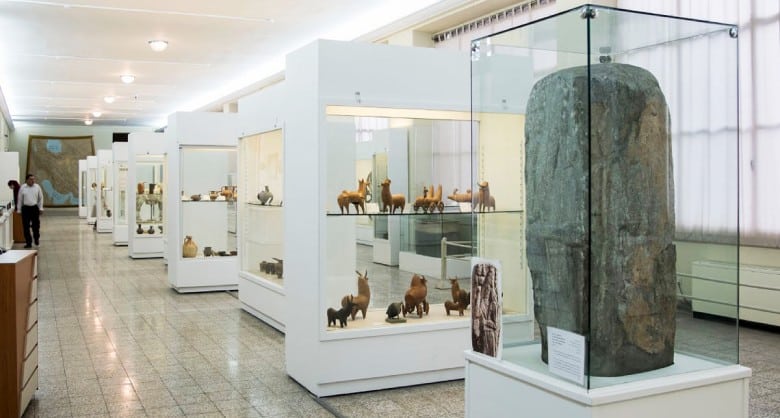
The construction of the National Museum of Kashan took place in 1346, utilizing the remains of Nizam al-Doulah‘s personal building. Situated on the northwest side of Bagh-e Fin, this museum was established by Nizam al-Doulah, who happened to be the son-in-law of Fath Ali Shah Qajar. Fin Garden served as his residence and court, prompting him to construct his living quarters and harem outside the main garden area, which eventually became known as Nizam al-Doulah’s solitude.
Covering an area of 300 square meters, Kashan National Museum consists of a single floor that encompasses both large and small halls, as well as a basement. This museum is divided into three significant sections: anthropology, archaeology, and handicrafts. In addition to showcasing pre-Islamic and post-Islamic pottery, ceramic objects, clothing, books, and more are also exhibited within its premises.
Royal Bath
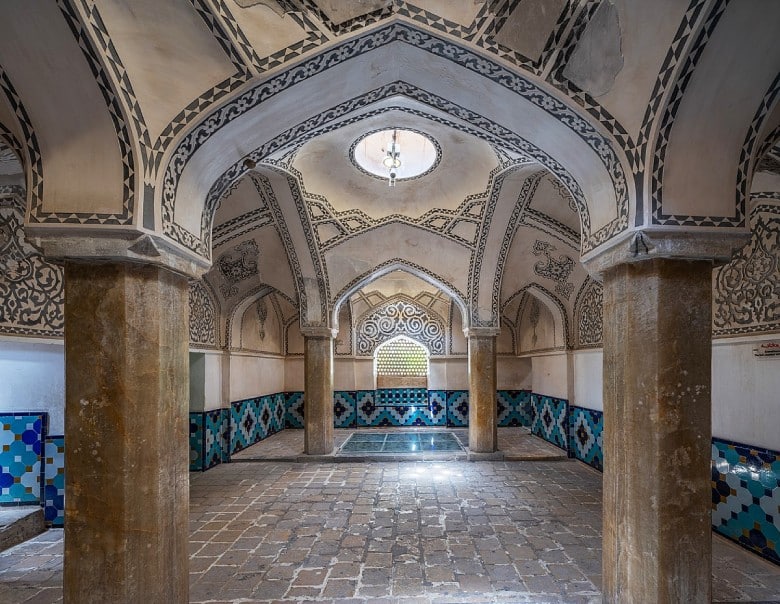
The construction of the royal bath took place in 1189 AH under the command of Fath Ali Shah Qajar. Its purpose was to provide a bathing facility for the Qajar kings during their visits to Bagh-e Fin. Additionally, a separate small bathroom was constructed for the staff, which was made available to the public and serfs on specific days of the week.
Twelve Fountains Pond
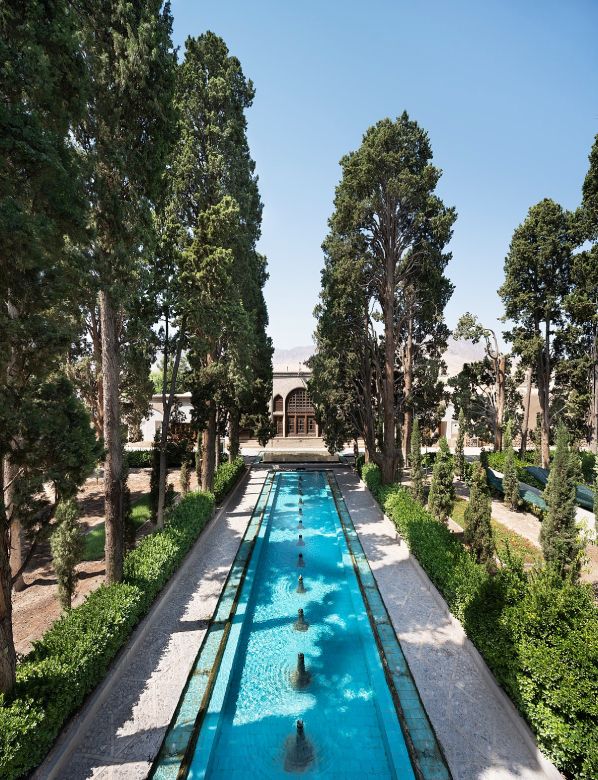
The construction of Twelve Fountains Pond dates back to the era of Mohammad Shah Qajar. This elongated and rectangular pond is adorned with exquisite fountains, making it a renowned feature of the Kashan Fin Garden. Positioned downstream from another pond, the water from the boiling pond cascades into Twelve Fountains Pond via clay tubs, enabling the utilization of its captivating fountains.
Trees, the Prestige of the Garden!
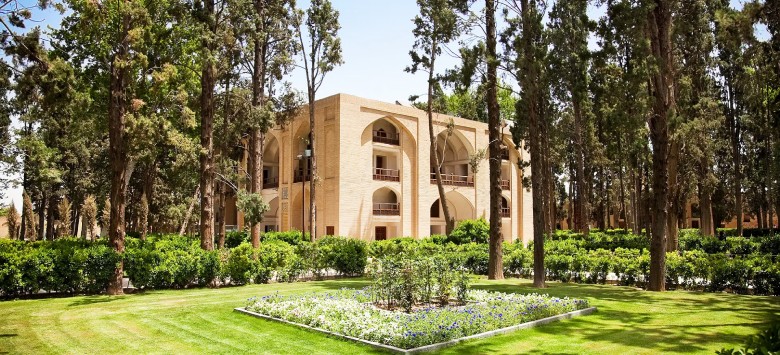
The Kashan Fin Garden boasts a multitude of trees, serving as a prominent feature that has maintained its verdant allure throughout the years. Within this Iranian garden, there are a total of 579 cypress trees and 11 sycamore trees, some of which have stood for centuries. Amongst these ancient trees, the renowned Lily and Majnoon cypress trees, with an impressive lifespan of approximately 500 years, proudly stand adjacent to the Qajar hut.
The significance of the trees in Fin’s garden can be determined by their age, as they played a crucial part in the garden’s design and received careful attention. The deliberate inclusion of plane trees alongside the cypress trees undoubtedly enhanced the garden’s visual appeal. Additionally, the presence of other trees like mulberries and figs further contributes to the garden’s overall beauty.
Book Iran Flights
Buy Iran flight tickets at the lowest price
Explore Iran’s culture and history with affordable and reliable flight tickets.
Final Words
Iranian gardens represent a unique style of landscape gardens that emerged during the Achaemenid Empire. These gardens have had a profound influence on garden design in different cultures, from Andalusia to India and beyond. Fin Garden in Kashan is one the glorious ones.
If you ever find yourself in Kashan, it is imperative to explore this ancient sanctuary of elegance and serenity!
Kashan Fin Garden FAQ
Where is the Fin Garden located?
Fin Garden is located in: Isfahan province, central part of Kashan city, Amir Kabir Street, Bagh-e Fin historical complex.
What is the best time to visit Fin Garden?
We recommend to visit Fin Garden in spring, which the Fin appears magnificent.
What are the most occurrences in Fin Garden?
There is no doubt which the murder of Amirkabir is the most impressive happening in the history of Iran and Fin Garden.
